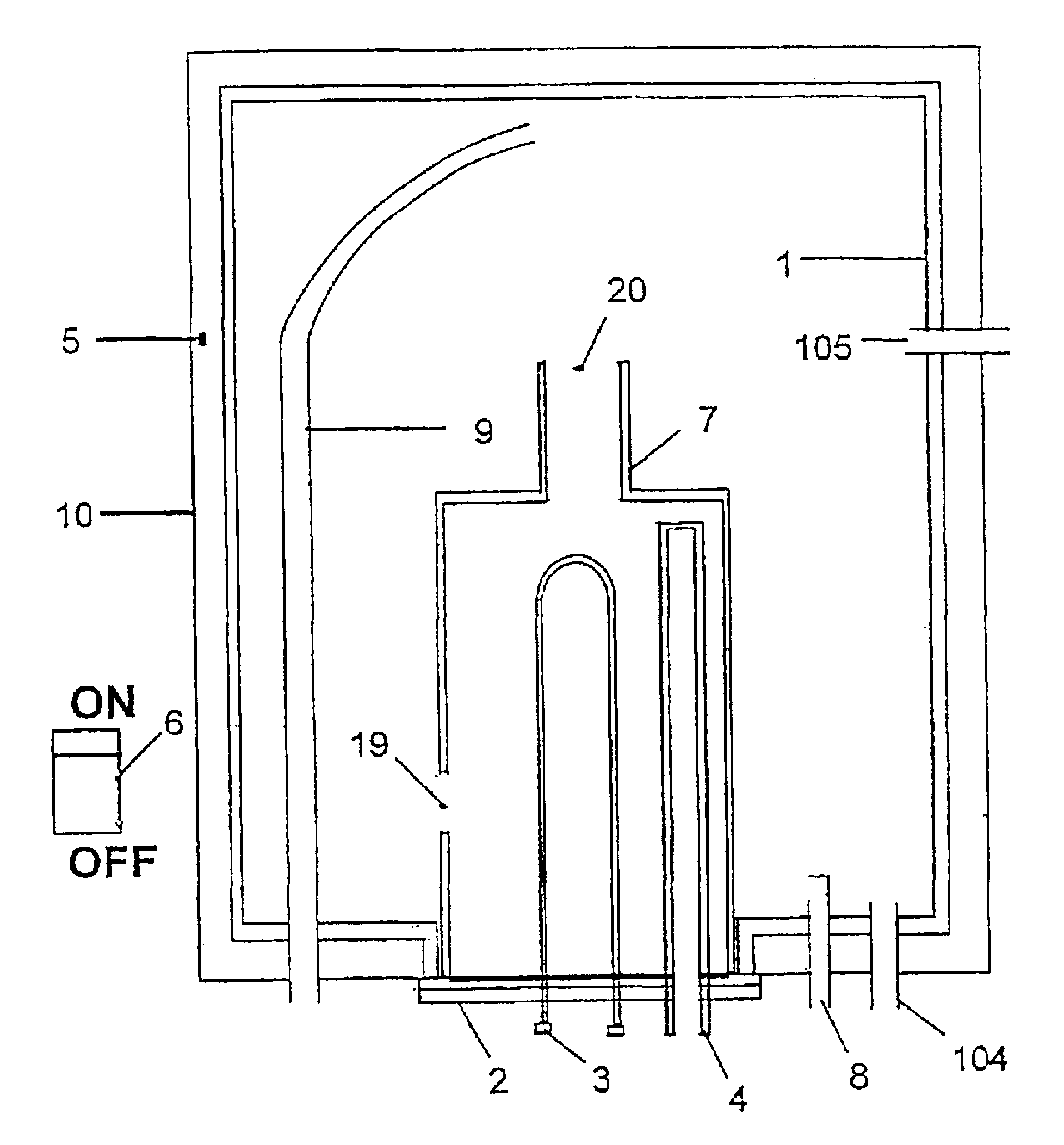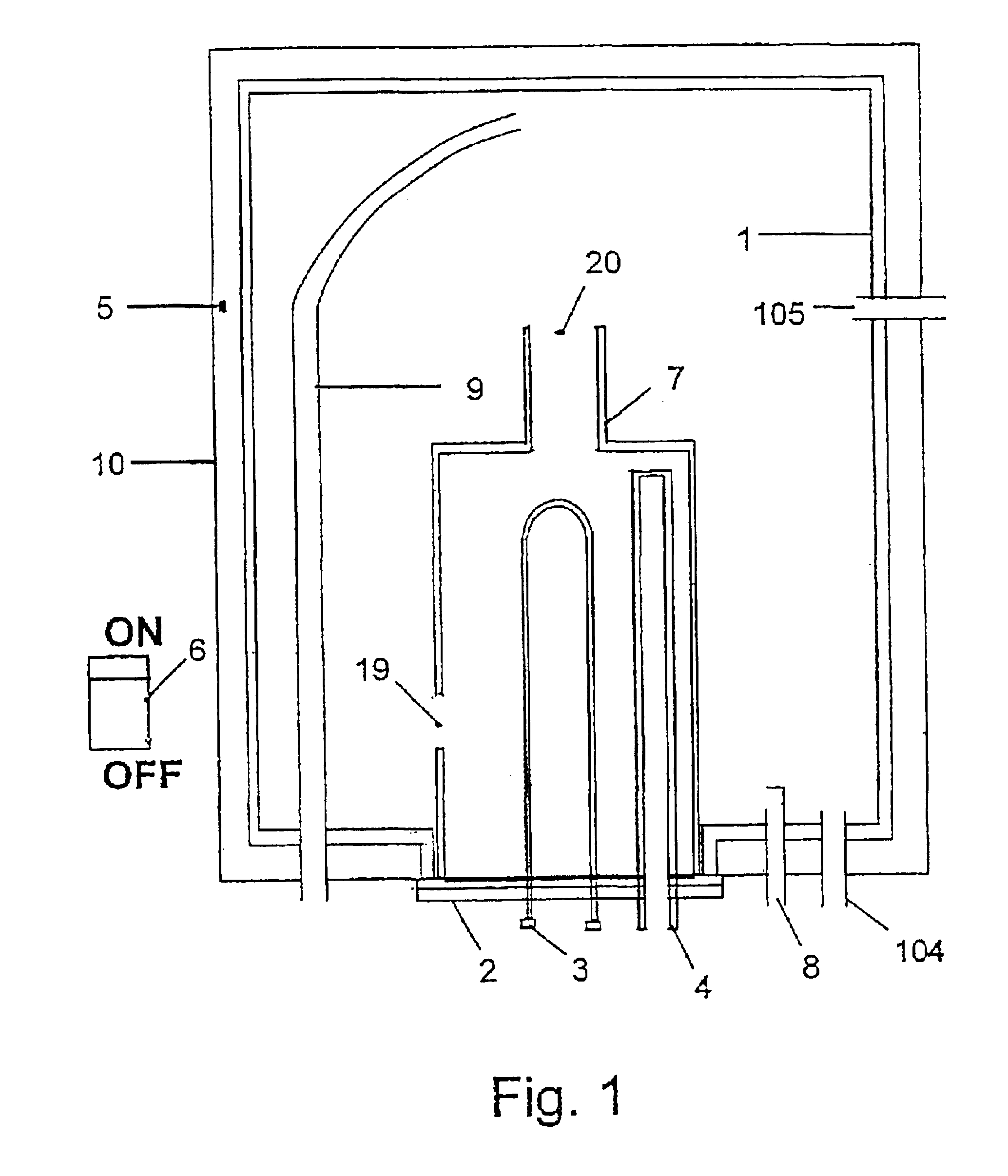Programmable domestic water heating system
- Summary
- Abstract
- Description
- Claims
- Application Information
AI Technical Summary
Benefits of technology
Problems solved by technology
Method used
Image
Examples
example 1
[0076]An 80 liter water tank having a heating element of 2500 Watts is provided. The present temperature of the water in the tank is 28° C. It is desired that at 19:00 this evening, the water temperature will be 50° C.
ΔT=50−28=22° C.
Therefore:
Watts·sec=80·4200·(50−28)=7.392·106 Joules
K=1+8060·2220·702500=1.041Δ t=1.041·7.392·1062500=3078.2 sec≅52 min
[0077]Therefore, the heating element will be activated at 18:08:00. If the user desires, the program may be set to continue water-heating for a specified duration of time. For example, if the user desires to keep the water in the tank at this temperature for an additional 40 minutes, the heating will resume each time the water temperature drops below 50° C., until 19:40.
[0078]According to the invention, the control unit operates continuously, checks the present date, time and temperature of the water in the tank, and calculates when to activate the heating element.
[0079]Example 1 shows that the system saves a significant amount of ...
example 2
[0119]It is desired to have water in the tank in a temperature of 50° C. at 19:00. The present temperature in the tank is 28° C. The control unit uses the algorithm to calculate the time duration required for the heating element to heat the water up to 50° C. The present calculation, using the algorithm of formula (2), results in 52 minutes of heating. The software continuously checks the calculation until 19:00 minus 52 minutes=18:08. At the calculated time 18:08 (if the temperature in the tank is still 28° C.), the heating element is activated automatically by the control unit. At 19:00, when the temperature reaches the desired temperature of 50° C., the control unit terminates the heating. If during the heating, i.e., between 18:08 and 19:00, hot water is consumed from the tank, and therefore the water temperature at 19:00 is found to be lower than the desired, the control unit continues to activate the heating element, until the water temperature reaches the desired temperature....
PUM
 Login to View More
Login to View More Abstract
Description
Claims
Application Information
 Login to View More
Login to View More - R&D
- Intellectual Property
- Life Sciences
- Materials
- Tech Scout
- Unparalleled Data Quality
- Higher Quality Content
- 60% Fewer Hallucinations
Browse by: Latest US Patents, China's latest patents, Technical Efficacy Thesaurus, Application Domain, Technology Topic, Popular Technical Reports.
© 2025 PatSnap. All rights reserved.Legal|Privacy policy|Modern Slavery Act Transparency Statement|Sitemap|About US| Contact US: help@patsnap.com



